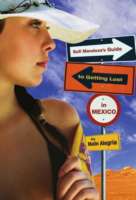
Cousins are friends and rivals. Cousins are funny and frustrating. But the most important thing is that cousins are family. We are Cousins / Somos primos celebrates the joy of this special family bond. The children explain that they are cousins because their mothers are sisters, and from the moment they get together, the fun begins. They march in a make-believe parade, gobble up a pizza, and share a cozy story on Abuelo\’s lap. But they also blame each other if something goes wrong, don\’t want to share their toys, and wiggle against each other to nab a spot on Abuela\’s lap. Written in simple language for children ages 2-5, the brief English and Spanish text will become a valuable tool to encourage children to think and talk about their own families. It will also become a favorite book for children and grandchildren to share with their parents, grandparents, aunts, uncles, and of course, cousins. Vivid illustrations by Christina Rodriguez in bright, primary colors complement this story that will be as much fun to read at story hour as it will be to read on the family sofa.







